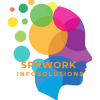Artificial Intelligence (AI) is no longer a futuristic concept—it is a fundamental driver of change across nearly every sector, and nowhere is this more evident than in the Software-as-a-Service (SaaS) industry. From intelligent automation to hyper-personalized experiences, AI is redefining how SaaS products are developed, delivered, and optimized.
As the SaaS model matures, the integration of AI is moving beyond backend support and entering the core of product innovation. Leading platforms are already using AI to solve complex problems, improve customer satisfaction, and unlock scalable growth. Here’s a closer look at how AI is transforming SaaS in 2025.
1. Advanced Automation Beyond Routine Tasks
Traditional automation in SaaS was largely rule-based, aimed at improving efficiency through pre-defined workflows. However, AI has introduced a new level of intelligence to automation—systems can now learn from user behavior, detect patterns, and make real-time decisions.
Modern SaaS platforms are using AI-powered automation to optimize internal processes such as on boarding, lead scoring, and billing. For example, customer relationship management (CRM) platforms with AI capabilities can automate sales follow-ups, prioritize high-value leads, and even forecast deal closures based on predictive modelling.
This shift reduces the manual workload across departments and accelerates decision-making, resulting in faster time-to-value for end users.
2. Hyper-Personalization at Scale
Personalization has become a baseline expectation among software users, and AI is enabling SaaS companies to deliver it more effectively and at scale.
AI-driven algorithms analyze vast amounts of behavioral data—from product usage patterns to support ticket histories—to tailor the user experience dynamically. Dashboards, notifications, and even feature sets can be adjusted in real-time to meet individual user needs.
This level of personalization not only enhances engagement but also boosts retention and conversion rates. It creates a software experience that feels intuitive, responsive, and uniquely suited to the user’s goals.
3. Predictive Analytics for Smarter Strategy
In the age of data, SaaS companies are under pressure to make more informed, data-driven decisions. AI-powered analytics tools are stepping in to fill this need by moving beyond retrospective reporting and into predictive—and even prescriptive—insights.
By applying machine learning to historical data, AI systems can forecast key metrics such as customer churn, revenue trends, and feature adoption rates. These insights help SaaS providers proactively adjust their strategies, anticipate risks, and identify growth opportunities before they become visible through traditional analytics.
Platforms like Gain sight and Mix panel have incorporated predictive features that inform customer success teams when and how to engage at the right time, maximizing lifetime value.
4. AI-Driven Cybersecurity and Compliance
SaaS applications often handle sensitive data, making cybersecurity and regulatory compliance top priorities. AI is playing a crucial role in strengthening both.
AI-based threat detection systems continuously monitor activity across applications and infrastructure. These systems can identify anomalies, flag suspicious behavior, and even respond autonomously to potential attacks. In addition, AI assists with compliance by automating data classification, access controls, and reporting functions to meet evolving regulatory standards.
This proactive approach not only reduces security risks but also builds greater trust among users and enterprise clients.
5. Intelligent Support Through Conversational AI
Customer support has been one of the most visible areas of AI implementation in SaaS. Chatbots, virtual assistants, and AI-driven knowledge bases are now common features in modern platforms.
Unlike earlier support bots, today’s AI-driven tools use natural language processing (NLP) to understand user intent and context. They can resolve a wide range of issues without human intervention, route complex inquiries more accurately, and gather valuable feedback for continuous improvement.
AI-enhanced support significantly reduces resolution time, improves user satisfaction, and lowers operational costs. It also allows human agents to focus on high-impact interactions rather than repetitive queries.
6. AI as a Built-In Product Capability
AI is no longer just a supporting technology—it is becoming a central feature in many SaaS products. Leading platforms are integrating AI into the core user experience to deliver unique, high-value capabilities.
In design software, AI is used to generate layouts and visual assets automatically. In writing tools, AI suggests better phrasing, grammar improvements, and tone adjustments. Project management platforms now offer AI-driven task prioritization and workflow recommendations based on team behavior.
This evolution is transforming how users interact with software and what they expect from it. Companies that successfully embed AI into their products are differentiating themselves in a highly competitive market.
Conclusion: The AI-SaaS Convergence is Just Beginning
The convergence of AI and SaaS is not a passing trend—it marks a permanent shift in how software is created and consumed. AI is enabling smarter automation, deeper insights, personalized experiences, and more secure environments.
As the technology matures, the SaaS companies that embrace responsible and strategic AI adoption will be best positioned for long-term success. However, with great capability comes the responsibility to ensure transparency, ethical usage, and data protection.
Those who strike the right balance between innovation and trust will shape the future of the SaaS industry in the years ahead.
